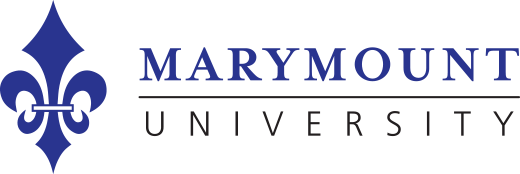The Top 5 Impacts of the Aging Population on Nursing

The health care system is changing as the Baby Boomer generation is aging. The impact of an aging population on nursing will be significant, and more nurses must join the workforce to meet the demand and ease this burden on the health care system.
The American health care system has an interesting few decades ahead. According to the U.S. Census Bureau, there were 54 million seniors aged 65 and older living in America in 2020. By 2035, experts project there will be 78 million American adults over age 65. By 2040, studies estimate that the number of those above the age of 65 will reach 80.8 million, and by 2060 the population of elderly in America will have nearly doubled from today, to 94.7 million.
As the percentage of older adults grows, the number of working nurses will need to grow as well, along with a dramatic shift in how we allocate resources to accommodate patients’ needs. In this blog, we’ll discuss how the aging population will impact the future of nursing.
Request My Free Marymount Accelerated BSN Program Guide
The Impact of the Aging Population on Nursing
By the year 2030, all the Baby Boomers will be at least 65 years old. One in five Americans will be of retirement age. The greatest impact of this aging population on nursing will be a major increase in demand for nurses — greater demand with limited supply.
As we look to the future of nursing, here are the five areas most affected by the growing elderly population.
Population Growth and Life Expectancy
According to the U.S. Census Bureau, population growth slowed in 2021 to approximately one percent. The University of Virginia Weldon Cooper Center Demographics Research Group predicts the American population will continue to grow by an estimated 20 million each year through at least 2040. However, Americans are living longer thanks to advances in medicine and technology.
In fact, a World Economic Forum report suggested that life expectancy will increase to 85 by 2060, up from the current average life expectancy of 75. Moreover, the population living to see 100 is predicted to grow to 3.7 million by 2050, up from only 95,000 in 1990. Unfortunately, a longer life means an increased risk for chronic disease.
The National Center for Chronic Disease Prevention and Health Promotion says six out of 10 U.S. adults have at least one chronic condition. We can expect this number to grow as the population ages.
In the future, nurse researchers will study how and why chronic conditions affect their patients and what treatment options work. Public health nurses will educate communities and promote healthy lifestyles. And direct care nurses in primary care offices, clinics and hospitals will care for patients when they are in crisis.
An increased prevalence of acute and chronic diseases will undoubtedly increase the demand for nurses.
Workforce Shortage
Hospitals and health systems across America are already facing critical staffing shortages that could potentially limit access to care. Yet, the aging population may worsen the workforce shortage.
According to the American Association of Colleges of Nursing, enrollment in nursing programs has increased but not enough to meet the expected demand for nursing professionals, including nursing faculty, researchers and primary care providers.
A recent report on the state of the nursing workforce recognized that the number of settings in which more than 40 percent of the RNs are nearing retirement is striking. Over the next few decades, some nursing specialties may lose half of their nurses. These areas where over 50 percent of the staff are over age 50 include the following:
- Occupational health (73.5%)
- Nursing administration (56.6%)
- Home health services (55.0%)
- Nursing homes (50.4% for in-hospital nursing home units; 56.9% for out-of-hospital units)
The same report estimated substantial growth in the RN workforce, with over one million new jobs by 2030. That includes replacing all the Baby Boomer RNs retiring over the decade.
AI and Other Technologies
Digital tools are rapidly driving changes in health care delivery. In the future, artificial intelligence (AI) and other technologies will be more integral to health care.
Doctors and other health care providers are already utilizing remote patient monitoring. They also use data analytics, robotic surgeries and virtual nursing assistants to improve the quality of patient care.
The specialty of nursing informatics promotes technology integration to support the profession. AI and other tools evolve and advance quickly. We need nursing leaders, faculty, researchers and informaticists to advance technology for patient care.
AI and other digital tools are accelerating already existing trends in nursing. One example of a trend in nursing that has recently expanded is the use of telehealth. Some believe telehealth nursing has been around since the invention of the telephone in the 1800s. Yet, the COVID-19 pandemic led to rapid virtual care and telehealth service expansions. Now, more providers are investing in telehealth technologies and telehealth nursing.
Demand for Specialty Nurses
In less than two decades, older Americans will outnumber kids for the first time in U.S. history. Experts worry that the health care system will not be able to handle the patient volume.
The Kaiser Family Foundation found that older adults require more care, accounting for over 25 percent of doctor visits, 35 percent of hospital stays and 56 percent of total health care spending.
Since a large percentage of health care is accessed later in life, the aging population will create more demand for physicians, nurses and other health care workers across all settings who specialize in caring for adults in older adulthood.
Specifically, nurses with the knowledge, experience and skills in hospice and home health, gerontologic nursing and long-term care will be in demand. Also, nurses specializing in chronic conditions, such as diabetic educators, will be in high demand.
Increased Need for Advanced Practice Nurses
Many RNs who hold a BSN or MSN are choosing to advance their qualifications to become an advanced practice registered nurse (APRN) to meet the health care challenges of the future. APRNs are a group of nurses with a master’s degree or higher in nursing practice and specialty training in a patient population. APRNs also have an additional license that gives them a wider scope of practice.
The four types of APRNs are:
- Nurse anesthetists
- Nurse-midwives
- Clinical nurse specialists
- Nurse practitioners
Nurse practitioners (NPs) comprise the largest group of APRNs, and almost 70 percent specialize in family practice.
In most advanced practice programs, NPs receive training to take on the primary care provider role. Family Nurse Practitioners (FNPs) deliver high-quality and effective care, particularly for chronic conditions.
Currently, nurse practitioners have prescriptive authority in all 50 states. As of July 2022, 34 states recognize nurse practitioners with full practice authority. In other words, they can practice independent of physician oversight.
Adding more NPs to the workforce will be critical over the next few decades because the health care system is experiencing a physician supply shortage. The Association of American Medical Colleges (AAMC) warns that the U.S. may face a shortage of up to 124,000 physicians by 2030. NPs can help fill the gap.
The U.S. Bureau of Labor Statistics projects APRN job growth of 45 percent from 2020 to 2030. Growth at this rate is much faster than in other occupations.
The Aging Population Will Need More Nurses
As we have seen, the aging population is growing, and so is the need for nursing professionals. To lessen the negative effects on the aging population, we need caring individuals who want to take the next step toward a rewarding career in nursing.
As we approach a time when nurses are needed more than ever, it is time for those who’ve been thinking about it to start training for a new career in nursing. Marymount University’s online nursing programs offer flexible, convenient learning options for aspiring nursing professionals. Moreover, Marymount’s Accelerated Bachelor of Science in Nursing (ABSN) degree requires no previous nursing experience if you already have an undergraduate degree in another discipline.
Marymount students can complete the ABSN degree in 16 months. And when it comes time to meet the clinical hours requirement, Marymount offers free clinical placement assistance.
As a Marymount student, you can answer the call for nurses and join the rewarding nursing profession.
Connect with one of our enrollment advisors today to take the first step on your nursing journey.
